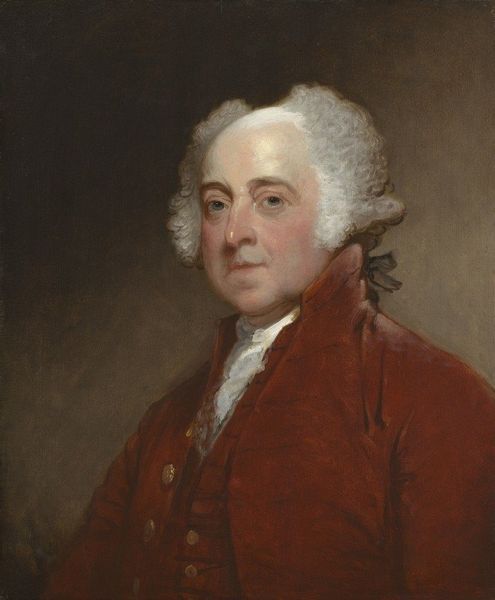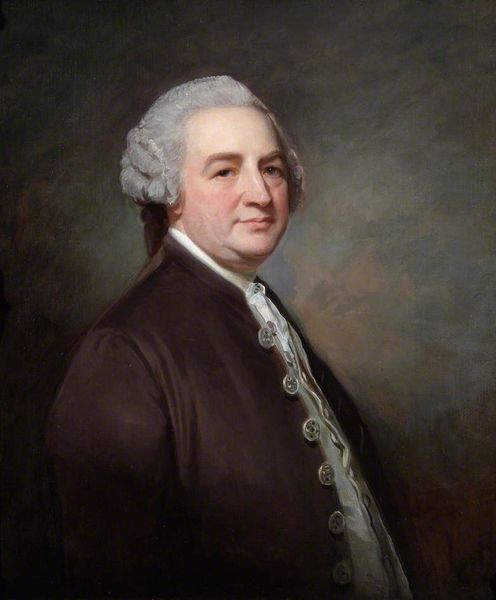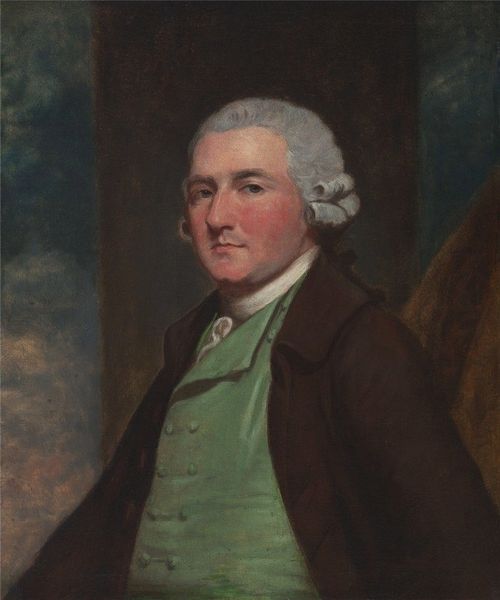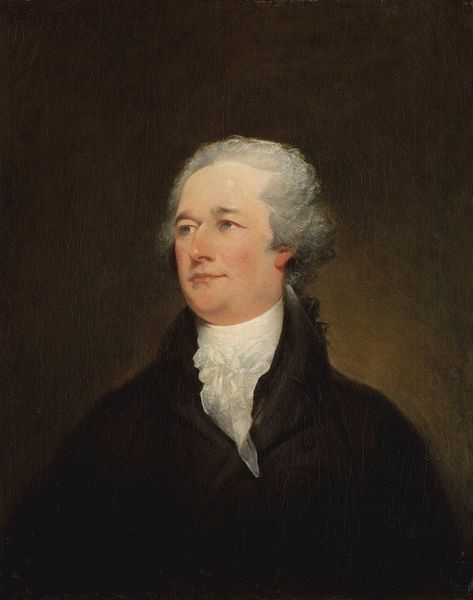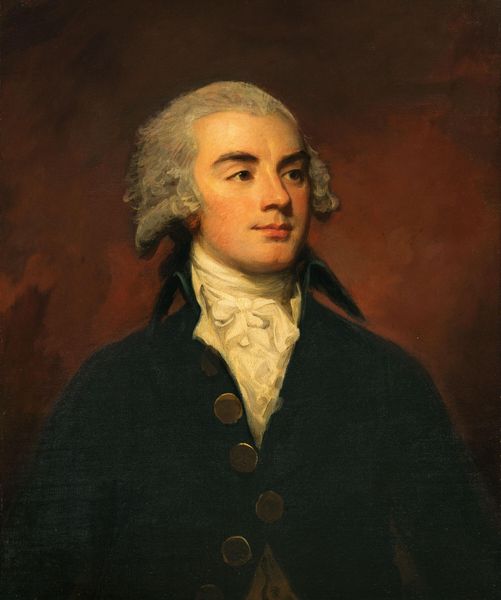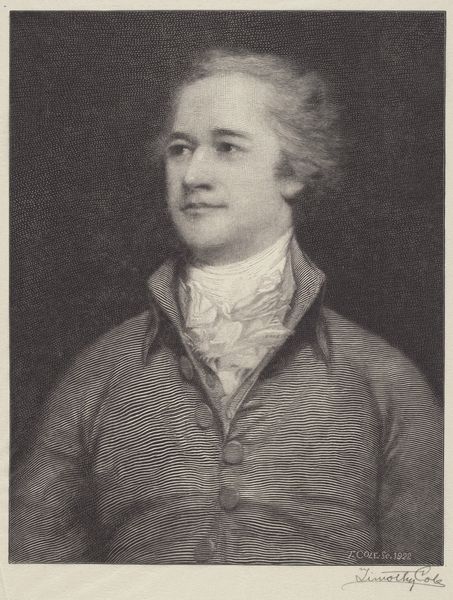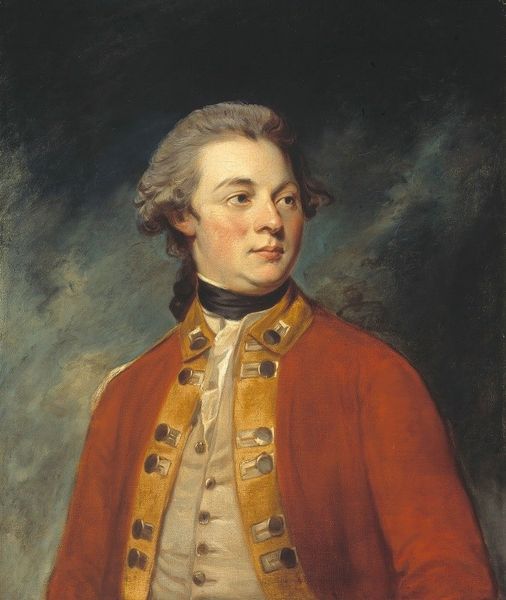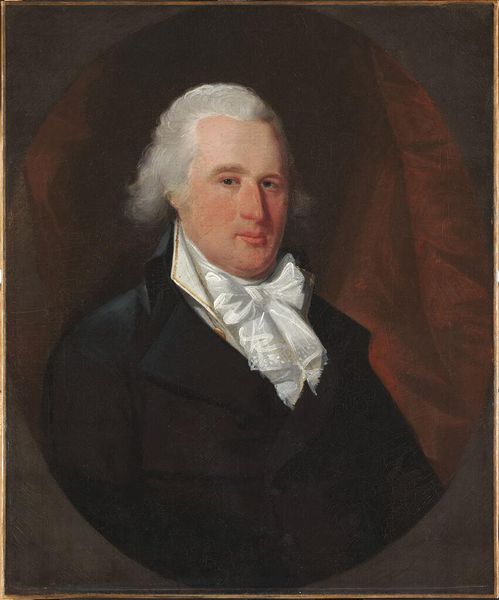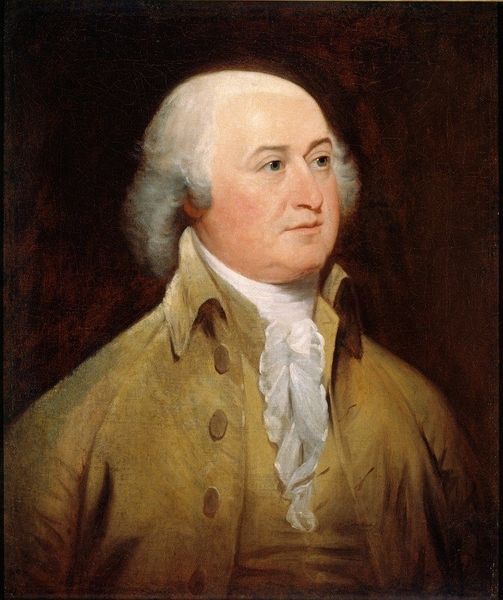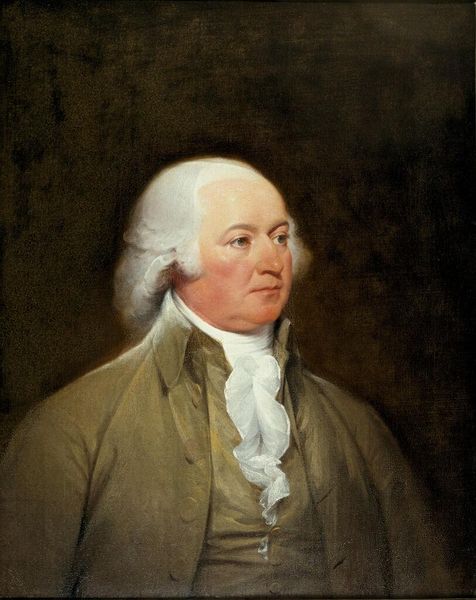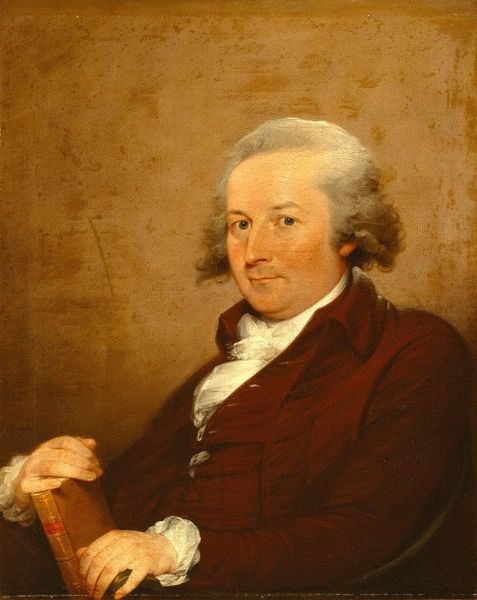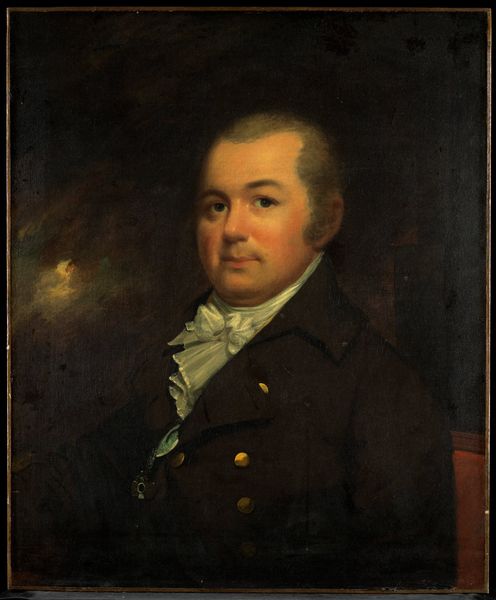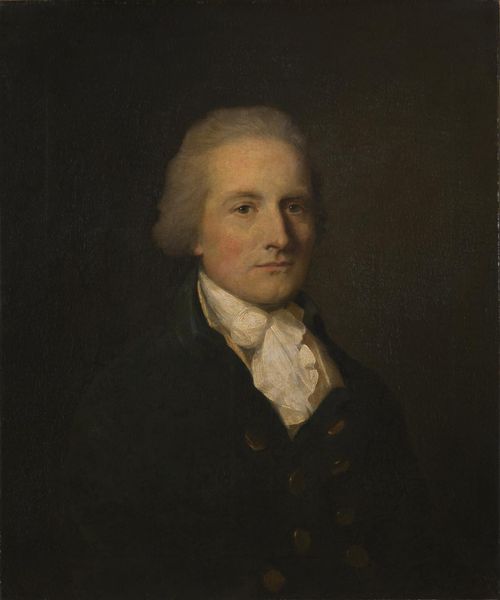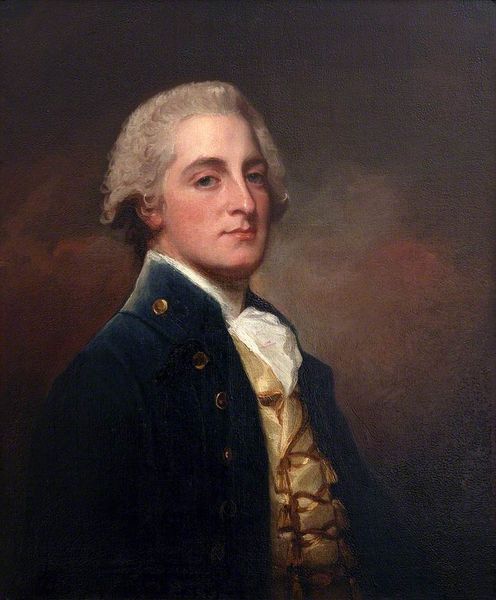
Copyright: Public Domain: Artvee
Curator: Immediately, I'm drawn to the materiality here, the layering of oil paint to render Alexander Hamilton's likeness. Eastman Johnson seems focused on the craft, less on idealization. Editor: It's a study in contrasts, really. Alexander Hamilton, painted by Eastman Johnson around 1890. Notice how Johnson, known for his genre scenes, renders Hamilton with such gravity, embedding him in the historical narrative. Curator: Precisely. The somber palette and visible brushstrokes suggest a democratizing of portraiture. He avoids the slick perfection of earlier academic portraits, offering something rawer, perhaps even more 'real' despite being posthumous. What does this tell us about artistic patronage at the time? Who was commissioning portraits like these and what was their intended use and audience? Editor: The late 19th century was a period of intense memorialization, especially of the Founding Fathers. Think about the public hunger for historical figures, and the role institutions played. These portraits served as both historical documents and ideological cornerstones, displayed in government buildings, schools. Johnson consciously contributed to the construction of American identity. Curator: The subtle textures Johnson achieves with the oil paint must be viewed through the labor and economics of artmaking. Pigment sourcing, mixing, application... these processes, these actions form this image, don't simply represent a likeness, these form meaning within their material properties and within artistic practice. Editor: Indeed, though its also important to realize that it speaks volumes about how we choose to remember, to canonize figures, especially powerful men. By this time Hamilton was already deeply entrenched as a political touchstone. Curator: It prompts the thought that beyond historical value, Johnson’s Hamilton offers a case study of labor—both Hamilton’s within his historical context, but no less importantly Johnson’s labor represented within this canvas itself, both inextricably linked as art object and historical object in one. Editor: Absolutely, it serves as a visual testament of American legacy. Seeing it now, in our context, prompts critical questions. How has Hamilton’s image been deployed, and to what political ends? How do we contend with his complexities, visually and historically? Curator: A compelling image, undeniably prompting thought regarding production, materials, labor. I appreciate that. Editor: Yes, it serves as a fascinating example of art's role in shaping public memory.
Comments
No comments
Be the first to comment and join the conversation on the ultimate creative platform.
